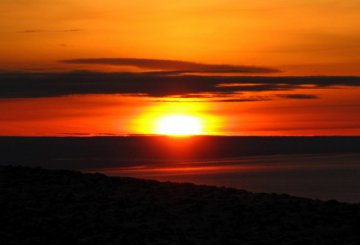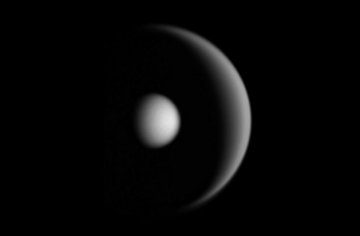 Where's Saturn? Is that a UFO--or the ISS? What's the name of that star? Get the answers from mySKY--a fun new astronomy helper from Meade. Where's Saturn? Is that a UFO--or the ISS? What's the name of that star? Get the answers from mySKY--a fun new astronomy helper from Meade. NEW SUNSPOT: The sun is no longer blank; a new sunspot is breaching the surface. Maxim Usatov photographed it this morning from his backyard in Dniepropetrovsk, Ukraine: image. The 'spot is small now, but growing rapidly. Amateur astronomers with solar telescopes may wish to monitor developments. more images: from P-M Hedén of Vallentuna, Sweden; from Howard Eskildsen of Ocala, Flordia; from Tony Pirie of Essex, UK; from Emiel Veldhuis and Willy Buning of Zwolle, the Netherlands; from Cai-Uso Wohler of Bispingen, Germany; a sketch from Eric Soucy-Lacroix of Ohain, Belgium. ANTARCTIC SUNRISE: "This might look like a very ordinary sunrise, but for our expedition overwintering in Antarctica, this was a very welcome return of the sun after a 10 week absence!" says Chantal Steyn, a member of the South African National Antarctic Expedition in Dronning Maudland (Queen Maud Land). 
She snapped the photo on July 26th. "It lasted little more than an hour," she says, "but brought the promise of a well earned and long awaited summer." It promises something different for people in the north--relief from the heat. The sun really is heading south, and autumn is only 57 days away. PHASES OF VENUS: Photographer Dave Gradwell of Birr, Ireland, calls this composite picture "New Venus in Old Venus's Arms." 
"The smaller Venus is from March 15th, while the larger is from July 23rd," he says. During that time Venus has swollen from a 12-arcsecond gibbous planet to a whopping 44-arcsecond crescent. Yes, Venus has phases, and you can see the crescent phase now. Point your backyard telescope low and west at sunset; brilliant Venus pops out of the darkening sky before any other planet or star.
.2007 Noctilucent Cloud Gallery
[Night-Sky Cameras] ["Noctilucent Cloud"--the song] | 
